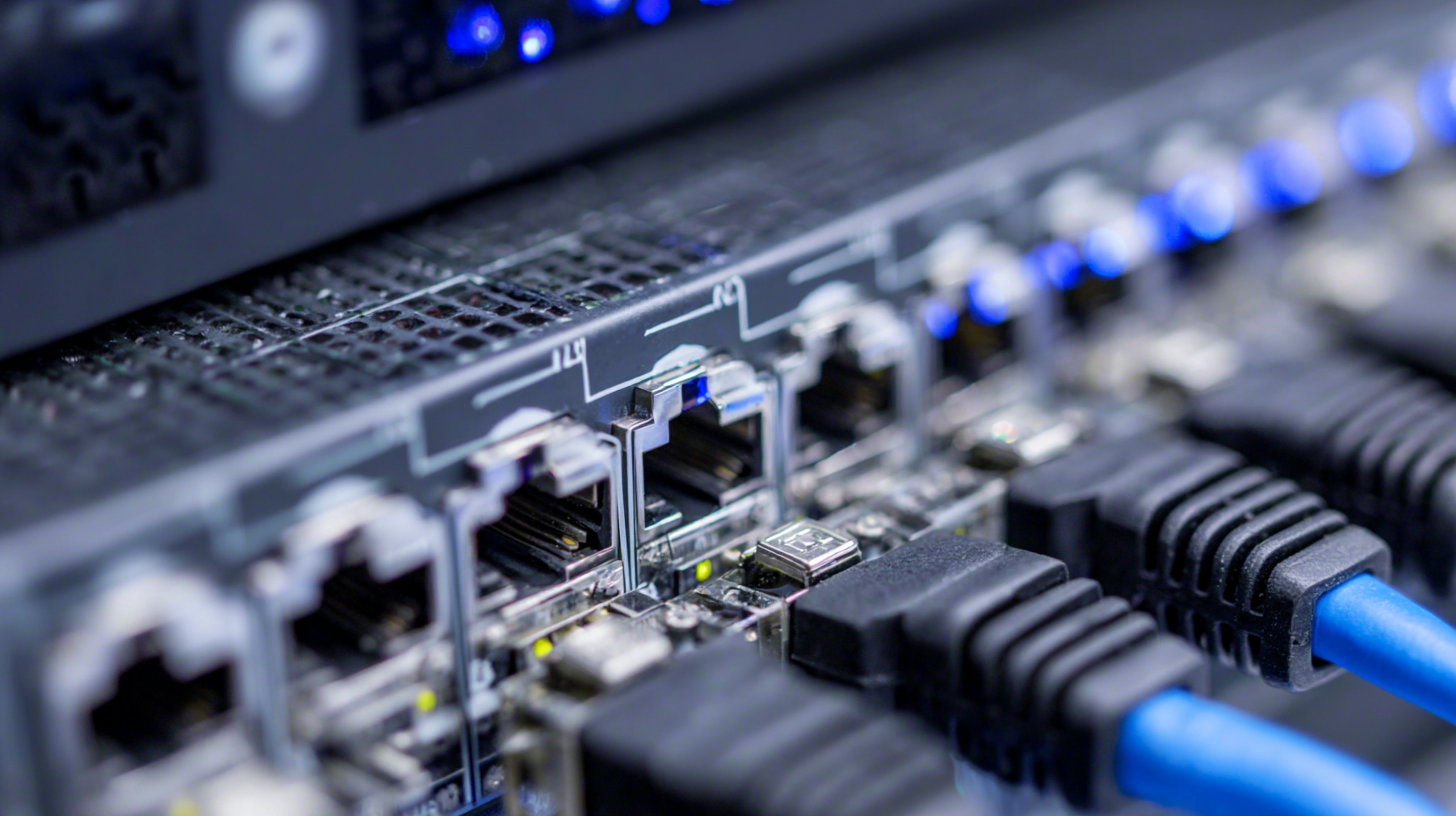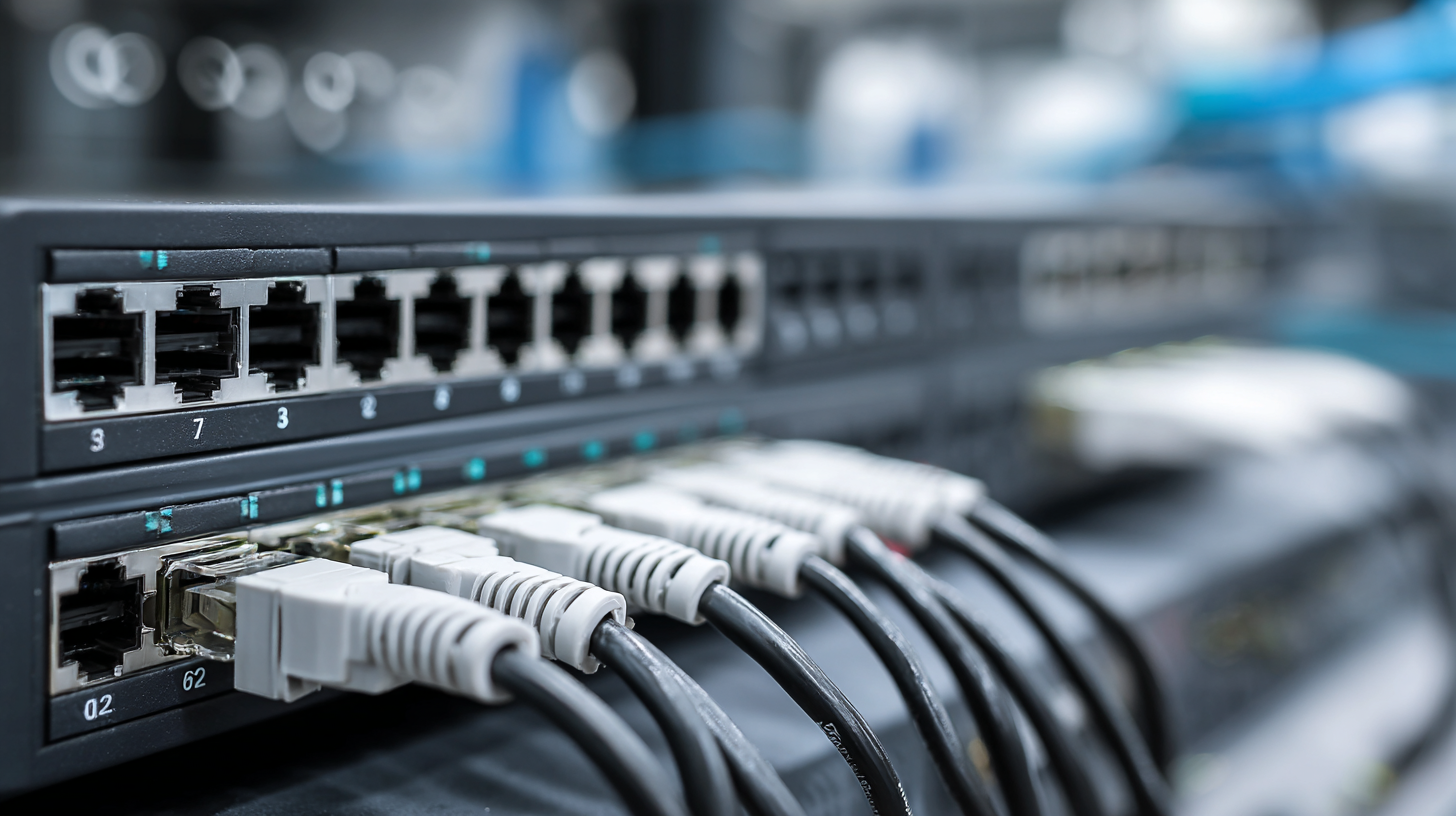
- hasivo@hasivo.com
- Mon - Sat at 7:00AM to 9:00PM
Leave Your Message

In today's digital landscape, the demand for high-speed network connectivity has reached unprecedented levels, making the choice of a Gigabit Switch crucial for businesses. According to a recent report by MarketsandMarkets, the global Ethernet switch market is expected to grow from USD 26.8 billion in 2020 to USD 38.5 billion by 2025, at a compound annual growth rate (CAGR) of 7.8%.

With the increasing reliance on cloud computing, IoT devices, and video conferencing, having a robust and reliable Gigabit Switch is vital for maintaining network efficiency and performance. As businesses continue to expand their technological capabilities, selecting the right Gigabit Switch not only ensures seamless data transmission but also supports future growth.
This blog aims to provide an essential checklist for choosing the best Gigabit Switch for your business needs, highlighting key features and considerations to help you make an informed decision, especially from China’s top-quality manufacturing sources.
When selecting the best gigabit switch for your business needs, it's crucial to understand your specific network requirements. This involves assessing the number of devices that will connect to the switch, the types of applications that will be run, and the bandwidth requirements. For example, if your business relies on data-intensive applications like video conferencing or large file transfers, you'll need a switch that can handle high throughput without compromising performance.
Tip: Start by mapping out your network layout and identifying all devices that will require a connection. This includes computers, printers, servers, and IP cameras. Knowing the total number of connections necessary will help you choose a switch with the right number of ports, ensuring that there’s room for future expansion.
Additionally, consider the switch's management features. Managed switches offer advanced options like VLAN support and traffic monitoring, which can enhance network performance and security. If your business anticipates changes or growth, investing in a managed switch can provide greater flexibility and control over your network.
Tip: Think about scalability. Investing in a gigabit switch with additional ports and support for newer technologies, such as PoE (Power over Ethernet), will future-proof your network as your business evolves and demands increase.
| Feature | Requirement | Notes |
|---|---|---|
| Port Count | 8 to 48 Ports | Choose based on the number of devices |
| Management Type | Managed or Unmanaged | Consider future network growth |
| Layer Type | Layer 2 or Layer 3 | Determine if you need routing features |
| Power over Ethernet (PoE) | Yes or No | For IP cameras, phones, etc. |
| Speed | Gigabit (10/100/1000 Mbps) | Ensure all critical devices support Gigabit |
| Network Protocols | VLAN, QoS, Spanning Tree | Evaluate based on data traffic needs |
| Warranty | 1 to 5 Years | Longer warranties often indicate better durability |
| Price Range | $50 to $1500 | Align with budget and feature requirements |
When selecting a gigabit switch for your business, understanding the key features is essential to ensure that the device meets your operational needs. Firstly, look for the number of ports available on the switch. For growing businesses, a switch with at least 24 ports is often ideal, allowing connectivity for multiple devices without the need for additional switches.
Another critical feature is the switch’s management capabilities. Managed switches provide greater control over your network, enabling you to monitor performance, configure settings, and prioritize traffic effectively. If your business relies heavily on streaming or large file transfers, choosing a managed switch will help optimize bandwidth usage.
Additionally, consider the switch's energy efficiency ratings and quality of service (QoS) features. An energy-efficient switch not only reduces operational costs but also minimizes your carbon footprint. QoS ensures that bandwidth is allocated appropriately, enhancing the performance of essential applications. Investing in a gigabit switch that incorporates these key features will position your business for better connectivity and growth.
When it comes to choosing the right gigabit switch for your business, understanding the difference between managed and unmanaged switches is essential. Unmanaged switches are often the go-to choice for businesses with straightforward networking needs. They are plug-and-play devices that require little to no configuration, making them easy to set up and maintain. This simplicity, however, comes at the cost of flexibility and control. Unmanaged switches do not offer features like traffic monitoring, VLAN support, or advanced security settings, which can limit your ability to manage network performance effectively.
On the other hand, managed gigabit switches are designed for businesses that require more control and customization over their networks. These switches provide a wealth of features, including network monitoring, redundancy setups, and the ability to segregate traffic using VLANs. With managed switches, administrators can configure settings to optimize performance, enhance security measures, and troubleshoot issues more effectively. Although they typically come at a higher cost, the long-term benefits in scalability and reliability make them a worthy investment for growing companies that cannot afford network downtime or inefficiencies.
When selecting a gigabit switch for your business, evaluating the port configuration and expansion capabilities is crucial. A switch with the right number of ports ensures that all your devices can connect without compromising network speed or efficiency. Consider how many devices you currently use and anticipate future growth in your network.
**Tip:** Always choose a switch that offers more ports than you currently need. This provides room for expansion without the hassle of replacing your equipment as your business grows. For example, if you have 10 devices now, consider a switch with at least 16 ports to accommodate additional devices later.
Moreover, not all ports are created equal. Look for switches that provide a mix of standard gigabit ports and higher-speed options like 10G uplinks. This flexibility allows for faster data transfer between critical devices and makes it easier to scale your network.
**Tip:** When assessing expansion capabilities, check whether the switch supports stacking or additional modules. This feature lets you combine multiple switches into a single unit, simplifying management and increasing overall network performance.

When selecting a gigabit switch for your business, budget considerations play a pivotal role in ensuring long-term value. According to the 2022 Network Hardware Market Research Report, companies that allocate a proper budget for networking equipment can reduce operational costs by up to 25% over five years. Investing in higher-quality switches may initially seem more expensive, but the total cost of ownership—including energy efficiency, maintenance, and potential downtimes—can lead to significant savings.
Furthermore, the demand for high-speed connectivity is projected to increase by 40% annually, as highlighted by the Global Gigabit Switch Market Analysis. This growth emphasizes the importance of choosing a switch that not only meets current needs but can also adapt to future expansions. A strategic investment in a capable gigabit switch not only aligns with budget constraints but also ensures that your infrastructure remains robust and scalable. With the right approach, your business can maximize both its technological capabilities and financial resources for years to come.
